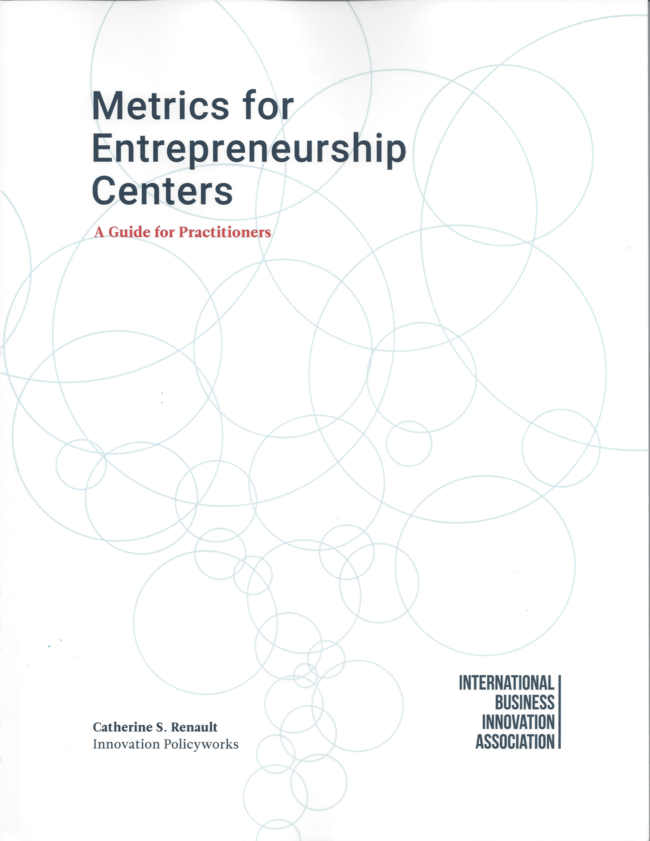|
|
|
Notes from Innovation Policyworks
Is entrepreneurship different for natural resource-based sectors? That's one of the questions I've been pondering this month as I've been working in the agbiosciences sector in Indiana, the forest products sector in Maine and mentoring an aquaculture entrepreneur through the Top Gun program.
All three sectors are dominated by large, global players, but smaller niche producers do prevail. And, in each instance, there is significant university research going on, but relatively low uptake in terms of startups that are based on that R&D. There are few examples of venture-backed companies in these fields, although ag-tech is coming on strong. So, should we be focusing on entrepreneurs in these sectors (given limited resources)? If yes, are their capital needs different? Are their infrastructure needs different? All great questions.... stay tuned as we figure this out!
Cathy
|
Some Groundbreaking Technologies are a Bad Fit for the Silicon Valley Funding Model
Greg Satell writes in the Harvard Business Review this month that it is a myth that the "venture-funded entrepreneurship [model] is generalizable and can be applied to every problem."
He says that there is a new model of innovation arising and the venture-model doesn't fit at all. The new model of innovation is one where technological risk and market risk coincide, especially for industrial technologies. So, startups working on entirely new technologies have a much more difficult time getting venture funding compared to startups looking to apply an existing technology (e.g. an app), largely because success is not likely within the usual 5-year VC horizon. Read his post
HERE.
Another angle on this issue is revealed from a look at the extreme geographic inequality of venture capital. It has always been very skewed, with CA, NY and MA receiving more than 80% of all investments. What's even more disturbing is that the inequality in increasing, with San Francisco, New York, Boston-Cambridge and Los Angeles all seeing double-digit increases in their share of the market over the past ten years. It continues to be true that venture capital is flowing to the largest, densest, most diverse and most economically advanced metro areas. See Richard Florida's post on this
HERE.
|
According to Rowan Gibson, author of "The Four Lenses of Innovation," innovative thinking comes from four practices that we all can do:
1.
Question deeply-held beliefs and assumptions. Challenge accepted approaches and think about alternatives to the "way we've always done things."
2.
Spot and exploit emerging trends. Welcome change rather than resist it.
3.
Leverage existing skills and assets in new ways. Strategic partnerships are a good way to extend the boundaries of your business.
4.
Attend to unmet needs and frustrations. Start with the customer perspective.
Read more in this great Martin Zwilling
post.
A related approach to innovation comes from Ann Herrmann-Nehdi. Her Ted Talk (HERE) is amazing and worthwhile to watch. She talks about how our brains can trick us and how to use it better to take advantage of diverse thinking styles.
|
|
Kauffman's 2018 State of Entrepreneurship Report
The Kauffman Foundation's annual report on entrepreneurship shows that while entrepreneurs are very optimistic about their businesses and their potential, they struggled with the technical steps of opening their businesses.
The survey conducted by Kauffman found that entrepreneurs think government isn't supporting them as they seek to open or grow their businesses. The entrepreneurs felt that the resources available did not match their needs. Challenges cited included setting up pay and benefits for employees, obtaining necessary licenses, setting up taxes and withholdings, insuring their business and paying business taxes.
However, few entrepreneurs turned to any external resources for help with these challenges. Eighty-three percent of businesses five years and older and 79% of startups said they didn't get support from government to start their business, and only 1/3 felt that government cares about business owners like them. See all the results of the survey
HERE.
These findings are important in the context of dwindling public resources for entrepreneurship centers. According to a study by the International Business Innovation Association (iNBIA), most entrepreneurship centers operate on less than $500,000 in total operating revenue, with the larger centers mostly in large metro areas. However, the sources of revenue are shifting, because membership and rental income from clients is not sufficient to keep a center operating. Most centers receive only 10 percent or less of their revenues from government sources. University support is critical to many centers, and corporate support is emerging. Read the data HERE.
Reducing regulation can be a strategy for supporting entrepreneurs. Governor Doug Ducey signed legislation in late March to make Arizona the first state in the nation to launch a regulatory "sandbox" for the fintech industry. It is hoped that the law will spur the development of emerging industries including fintech, blockchain and cryptocurrencies in Arizona by removing regulatory barriers for innovators.
|
Hawaii Making Clean Energy Policy History
Hawaii is the only state with a 100 percent renewable electricity mandate and the only state whose mayors have committed to achieve 100 percent renewable fuel sources for all ground transportation.
Governor David Ige has made history by signing a law making Hawaii the first state to have performance-based ratemaking mechanisms for its utilities. This means that Hawaiian utilities will now be paid based on metrics like rate affordability, service reliability and customer engagement and satisfaction, including rapid integration of renewables, and the use of onsite solar and storage. Learn more
HERE.
|
|
RI Loses $1.8 million annually on Film Tax Credits
Regular readers will know that I generally dislike Film Tax Credits because they don't generate local economic growth.
The RI Office of Revenue Analysis just released a new report on their state's film tax credit. They found that productions have generated an average of 27 cents for every $1 of tax credit. There has been a modest increase of 94 low-paying jobs since the credit was created. The state has given $84 million in credits since the program was enacted in 2005. The report is
HERE.
|
|
Score One for Middle-Age!
A new working paper from the National Bureau for Economic Research find that successful entrepreneurs are middle-aged, not young!
The mean founder age of growth-oriented startups in the past decade is 45! The findings hold for all tech sectors, entrepreneurial hubs and successful firm exits. A big driver is prior experience in the specific industry which predicts greater rates of entrepreneurial success. This finding is counter to the popular narrative about young entrepreneurs. Access the paper
HERE.
|
|
Publicly-owned Internet Networks Saving Small Towns
Places like Sandy, OR, Leverett, MA and Longmont, CO have widespread, fast and affordable broadband service, made available through publicly-owned broadband networks.
Many municipalities have long been in the utility business, owning water systems, local telephone systems and power systems. Now, many are exploring how to provide Internet service, so essential for economic growth, but not being provided by the large providers whose incentives favor dense, urban locations where profits can be maximized. In contrast, a recent Harvard University study has found that public broadband networks tend to provide cheaper, better and more comprehensive service. Learn more
HERE and
HERE.
|
|
News From Clients
Congrats to Greg Reibman and the folks at the
Newton-Needham Regional Chamber on the announcement that UMass Amherst has an agreement to acquire the Mount Ida College campus located in the
N2 Innovation District. Greg notes that finding skilled workers is a key challenge facing area employers, and that the STEM training planned for the campus will provide the talent needed to continue to grow technology employment in the District and surrounding areas.
Congrats also to the
Bridgeworks Incubator in
Allentown, PA. Program Manager Anthony Durante released data showing metrics for Bridgeworks client companies. Employment is 3X from where it was in 2012 [when Camoin and Innovation Policyworks worked with Bridgeworks to set a new strategy], and client company revenue is up 2.5X. Anthony said, "If we look back to where we were in 2012, we are really hitting our stride. We have a group of solid ventures in our program, our programming continues to improve, and the center is approaching full capacity."
|
|
| |
|
"
I've learned that people will forget what you said, people will forget what you did, but people will never forget how you made them feel."
|
|
Innovation Spark of the Month

GrubHub has partnered with the Women Chefs & Restauranteurs Association to create an online map show the location of women-owned restaurants across the US.
Trend-Watching asks:
How could your business utilize your existing offerings to support - and make it ultra-convenient for consumers to support - similar social causes?
|
Ten Most Active Nonprofit, Public or University Investment Funds
- Connecticut Innovations
- Ben Franklin Technology Partners of SE PA
- Elevate Ventures (Indianapolis, IN)
- Innovation Works (Pittsburgh)
- District 3 Innovation Center (Montreal, QC)
- TMCx Innovations (Houston)
- TEDCO (Maryland)
- (tie) Rev1 Ventures (Columbus, OH
- (tie) Startx (Palo Alto)
- Innova Memphis
|
Rural Counties Are Making a Comeback
After six years of population exodus from rural and suburban areas, the expected return has begun to show up in Census data.
Steady improvement in the economy and expensive urban housing markets appear to be driving people back to the suburbs, small cities and small towns. In fact, the bigger rural counties, those with a town of at least 10,000, have turned the corner the fastest. Here's the STORY.
|
Metrics for Entrepreneurship Programs
 Have you been wondering how to convince your stakeholders that your program is performing well? My book on evaluating entrepreneurial programs, written for the International Business Innovation Association (iNBIA), is available on its website. The basics apply to any economic development program. Check it out HERE. Have you been wondering how to convince your stakeholders that your program is performing well? My book on evaluating entrepreneurial programs, written for the International Business Innovation Association (iNBIA), is available on its website. The basics apply to any economic development program. Check it out HERE.
|
|
Quick Links
Maine's Knowledge Economy: A Snapshot 2017
|
|
|